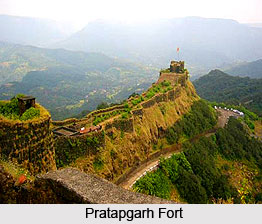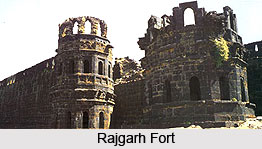 Forts in Mahabaleshwar serve as magnificent memoirs of ancient times narrating a number of intriguing historical events. These forts were built ages ago but still exhibit captivating beauty. The massive forts with its magnificent towers, monuments and temples make them a visual treat. The location of these forts at high altitudes offers picturesque view of the surrounding areas. Apart from this, the mesmerizing landscapes adorning the surroundings of these forts make them some of the most impressive monuments of the country. Forts in Mahabaleshwar attract a plethora of tourists with an urge to explore the historical aspects and wondrous natural beauty of India.
Forts in Mahabaleshwar serve as magnificent memoirs of ancient times narrating a number of intriguing historical events. These forts were built ages ago but still exhibit captivating beauty. The massive forts with its magnificent towers, monuments and temples make them a visual treat. The location of these forts at high altitudes offers picturesque view of the surrounding areas. Apart from this, the mesmerizing landscapes adorning the surroundings of these forts make them some of the most impressive monuments of the country. Forts in Mahabaleshwar attract a plethora of tourists with an urge to explore the historical aspects and wondrous natural beauty of India.
Famous forts of Mahabaleshwar
There are numerous popular forts which are situated in Mahabaleshwar and these are as follows:
Pratapgad Fort: Pratapgarh fort is one of the most famous forts of the country, built in 1656-58 AD by Shivaji. The fort stands on a spur overlooking the road between the villages of Kinesvar and Par.
Kamalgad Fort: Kamalgad fort is another significant fort situated near Mahabaleshwar. It is also called as Nandangiri fort and Bhelanja or Kattalgad meaning the death fort which was constructed by King Bhoj-II of Silhara dynasty, between 1178 and 1209 AD. Copper plate inscriptions found in Satara bears this testimony. Kamalgad Fort is a square hill fort in Panchgani.
Torna Fort: Torna fort is another significant fort situated near Mahabaleshwar. In 1643 the fort was captured by Shivaji Maharaj while he was only 16 years of age, making it an important centre of Maratha Empire. A number of towers and monuments are housed in the fort. It is also known as Prachandagad.
 Rajgarh Fort: Rajgarh fort is another hill fort that exhibits beautiful architecture of Deccan region. One of the spurs of Sahyadri Mountains, called Murum hill, houses this fort at a height of about 1300 metres from the sea level. The fort comprises four gates namely Kaleshwari or Dindi gate, Alu, Pali and Gunjavane.
Rajgarh Fort: Rajgarh fort is another hill fort that exhibits beautiful architecture of Deccan region. One of the spurs of Sahyadri Mountains, called Murum hill, houses this fort at a height of about 1300 metres from the sea level. The fort comprises four gates namely Kaleshwari or Dindi gate, Alu, Pali and Gunjavane.
Ajinkyatara Fort: Ajinkyatara fort is situated at a little distance from Mahabaleshwar over one of the seven mountains (Ajinkyatara Mountain) which surround the city of Satara. Built in 16th century, the fort played a significant role in the history of Maratha Empire. Being situated at a high altitude, the fort offers a magnificent view of nature.
Sajjangad Fort: Sajjangad fort is important for being the resting place of Sant Ramdas who was a saint and social reformer of 17th century. It was constructed by Bahamani Emperors. The fort is presently under the maintenance of Ramdas Swami Sansthan which is a trust established during the time of Shri Ramdas Swami. The fort was previously known as Parali. It was renamed as Sajjangad fort on the request of Shivaji Maharaj to Shri Ramdas Swami, for setting up a permanent monastery there.
Chambhargad Fort: Chambhargad fort stands at a height of 1200 feet from sea level. The purpose behind the building of this small fort was the surveillance of the surrounding area.
Avchitgad Fort: Avchitgad fort is also located on the Sahyadri ranges. A village called Medha is situated at the foot of this fort. Shilahar kings established this fort and it was later used by the Nizam of Ahmednagar. Maratha king Chhatrapati Shivaji also had contributions in the renovation of this fort. Splendid views of nearby forts can be obtained from Avchitgad fort.
Chandan-Vandan Forts: Chandan-Vandan forts are twin forts situated at a height of about 3800 feet. These serve as excellent destinations for trekking. At the main entrance of the fort there are two bastions. The fort is dedicated to Lord Shiva. A group of five banyan trees also stand atop the fort along with a statue of Lord Ganesha.



















